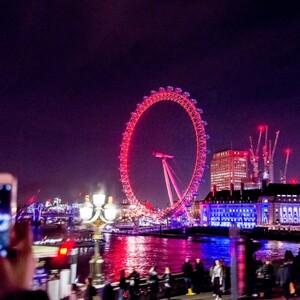The Cayman Islands expand Conservation Education Programs for children
The post The Cayman Islands expand Conservation Education Programs for children appeared first on TD (Travel Daily Media) Travel Daily Media.
The Queen Elizabeth II Botanic Park, located in Grand Cayman, has almost finished The Children’s Garden, a dedicated area which aims to create a fostering environmental, recreational and educational space for children. This initiative aims to engage younger people with the local ecosystem through interactive and passive learning and hands-on experiences. The Children’s Garden is not just a playground but a classroom without walls, where the natural world becomes a teacher and children can cultivate a lifelong appreciation for environmental stewardship.
The Queen Elizabeth II Botanic Park stands as a testament to the Cayman Islands’ breathtaking natural splendour and storied past. This conservation oasis draws visitors from around the globe, eager to delve into the diverse array of tropical plants and flowers. The park’s vibrant, meticulously tended gardens are a hidden treasure, set against the backdrop of lush tropical woodlands that crisscross the expanse of the national park. It is a place where history intertwines with the beauty of nature, offering a serene retreat for those seeking to connect with the environment.
John Lawrus, the General Manager of the Queen Elizabeth II Botanic Park, has been at the helm for 23 years, championing conservation. His unwavering commitment to preserving the unique wild species and protected plants of the Cayman Islands, such as the Bananaquit bird and the four orchid species endemic to the region, is noteworthy. John’s dedication extends beyond local flora and fauna; he is passionate about educating both local youths and young visitors and hopes that a young person will have his job one day. His efforts ensure that they not only appreciate but also contribute to the protection of their environment. This educational outreach is part of a pioneering vision that took root with the park’s 1994 plan, culminating in the creation of the Children’s Garden, a place where interaction with and learning about natural habitats is encouraged, fostering a sense of wonder and respect for nature among the next generation.
The Children’s Garden features a vibrant grow zone, a sensory garden, Discovery towers and is a treasure trove of learning opportunities. The maze, Ecosystem Pond, and playful splash pad offer adventures, while the expansive lawn and intriguing tunnel area provide the perfect backdrop for discovery and play. Aspiring botanists can freely wander the park and delve into the natural world.
The heart of the garden contains a multi-use facility doubled as an outdoor classroom to play a valuable role in local environment education. Local schools have the opportunity to visit and teach science classes, using elements of the garden to study ecosystems and put new skills into practice. As a multi-use facility, the botanic park also encourages local communities to be involved and use the space for cultural performances, educational displays and birthday parties for young environmentalists. (hosted Gimme Story for the first time last year)
Visitors, including children, will also have the opportunity to meet Blue Iguanas – a rare species native to the Cayman Islands- and learn about the conservation work that has been done to protect the once critically endangered species. The Botanic Park has been an instrumental partner in the National Trust for the Cayman Islands’ conservation of the Blue Iguana through the Blue Iguana Conservation Programme. The Blue Iguana is endemic to Grand Cayman and the island’s largest native land animal. Established in 1990 in response to the species’ critical numbers, which had plummeted to just 30, the programme set an ambitious target: to reintroduce 1,000 Blue Iguanas into the wild, thereby ensuring their long-term survival. This initiative saw remarkable success, leading to the reclassification of the Blue Iguana from ‘critically endangered’ to ‘endangered’ on the IUCN Red List in 2012. It was a significant triumph in 2018 when the programme proudly released its 1,000th Blue Iguana back into the wild, marking a significant victory for conservation efforts.
The Queen Elizabeth II Botanic Park, nestled in the district of North Side on Grand Cayman, spans an impressive 65 acres under the stewardship of the Cayman Islands National Attractions Authority with the land owned by Cayman Islands Government and the National Trust for the Cayman Islands. This prestigious park is a testament to conservation, education, and care, seamlessly integrated into its design. It boasts a semi-natural lake that serves as a haven for the West Indian Whistling Duck, while the native trees cast a cooling canopy over vibrant colour-themed gardens. Encircled by a protected natural forest, the park is a sanctuary for diverse wildlife, often spotted meandering along the wild trails. This blend of flora and fauna has rightfully earned the park its accolades and remains a cornerstone of the island’s natural heritage.
The post The Cayman Islands expand Conservation Education Programs for children appeared first on Travel Daily Media.











